Every profession has its own jargon—buzzwords used as shorthand, often using acronyms. One reason jargon is popular in almost every profession is for speed in communication. Unfortunately, jargon is also used to create a closed, hermetic environment where only those in the know can translate the jargon into meaningful terms.
From the military to medicine, jargon can run rampant. Advertising and marketing have buzzwords and acronyms, too, which can be confusing and intimidating when dealing with ad agencies or when checking out advertising and marketing websites. Unfortunately, digital advertising has brought about a whole new lingo that didn’t exist 20 years ago.
We at McFadden/Gavender think communication is the core of what we do, so using jargon that only those within our industry can understand is counterproductive.
Common Terms Used in Advertising
In an attempt to demystify the world of advertising and marketing, we’ve compiled a list of popular advertising terms, along with their definitions, and we promise if we use any of them when you contact us, we’ll explain them in everyday English. Here is our list of common digital advertising terms:
- A/B Testing
- Ad Banner
- AdWords
- Analytics
- Bounce Rate
- Call to Action (CTA)
- Click-Through Rate (CTR)
- Conversion
- Conversion Rate
- Funnel
- Keyword
- Landing Page
- Native Advertising
- Retargeting
- Return on Investment (ROI)
- Search Engine Results Page (SERP)
Learn About Common Advertising Terms
For those who are interested, our digital marketing team has taken the time to breakdown some of the common digital and print media advertising terms we use in the office.
A/B Testing
This is the process of comparing two different version of an ad, web page, or landing page to see which version gets a better response. Generally, just one element is changed, with the goal to discover what makes one ad more successful than another. For example, the copy on one ad might be blue on red and the other would be blue on yellow. The better performing ad is then matched against an ad that’s identical except for a different element. Once you optimize your ad, it will only elements proven successful.
Ad Banners
A ubiquitous form of digital advertising, banners are embedded in a web page, can run vertically or horizontally, and can include text, graphics, or video. Ad banners are often paid sponsorships that can grow in price depending on the amount of traffic to the site they are posted.
Adwords
Adwords is a service provided by Google using keywords to create ads that appear in a search results page. Businesses only pay when someone clicks on the ad, known as pay-per-click (PPC).
Analytics
Google Analytics uses data and statistics to discover how users interact with a webpage by compiling information on the source of traffic, number of page views, time spent on a page, percent of single page visits, and many other parameters. Using that information, users can optimize their website content or even ads accordingly.
Bounce Rate
A bounce is a website visit where the user looks at only one webpage or landing page and then, with no other interaction, leaves. The bounce rate is the number of bounces divided by the total number of views in one day. Example: 75 (bounces)/100 (views) = 0.75 or 75% bounce rate. A high bounce rate usually means that the page is poorly designed, cluttered, or confusing.
Call To Action (CTA)
A CTA is a text or a graphic, such as a button, that invites a user to take a certain action. Text such as “Learn More” or “Click Here” or “Start Shopping” are all calls to action. These help direct website visitors to content you want them to visit.
Click-Through Rate (CTR)
This is the number of clicks your ad receives per the number of views, or impressions, expressed as a percentage. Example: 5 (clicks)/100 (views) = 0.05 or 5% (CTR). Click-through rate is essential part of understanding how your ads or website content is performing. If you have a low click-through rate on your website to other pages, you may need to update the location of your CTA’s of your website menu.
Conversion
Conversions are a specific action that an advertiser wants a web user to make, usually actions such as signing up for a newsletter, submitting an email address, or making a purchase.
Conversion Rate
Conversion Rate – Like the click-through rate, the conversion rate is expressed as a percentage. The conversion rate can be calculated in two ways: as the number of users who completed the required task and dividing it by either the total numb or views, or by the total number of users who clicked on the ad.
Funnel
Usually in reference to something being at the top or the bottom of the funnel. The top of the funnel is the very first stage of the buying process; the bottom of the funnel is just prior to a customer making a purchase. Ideally, a marketing strategy is to take a customer from the top to the bottom of the funnel via a logical and helpful path.
Keyword
Keywords are a word or phrase that will match popular searches. In search advertising, a bidding process for keywords determines ad ranking on a search page. Contextual advertising also uses keywords by incorporating them in text so that the pages containing the keywords will be displayed in a list of search engine results. Keywords planners can help you organize and manage which keywords you are targeting where. In-house, we use a complex keyword management system that manages rank tracking all over the globe.
Landing Page
A webpage that users land on after clicking on an ad. The landing page usually contains a call to action, asking users to purchase something, supply an email address, or provide some other information. Landing pages are used for targeted ads and for generating high click-through rate. We have created landing pages that have generated thousands of impressions, and it starts with the design and speed of your page.
Native Advertising
Native Advertising – Ads that are indistinguishable from the non-advertising content that surrounds them. For example, a video on a lifestyle site that claims it will show a decorating technique to make rooms feel more spacious but ends by advertising a brand of interior paint.
Retargeting
A user visits your website without making a purchase. While on your site, a cookie is placed in the visitor’s browser. Later, as the one-time visitor visits other sites, ads for your product are displayed, eventually bringing the visitor back to your site to make a purchase.
Return on Investment (ROI)
ROI is a process using simple math to determine if the monetary benefits from an expenditure, such as an advertising campaign, are more or less than the amount spent on the campaign. There are many ROI calculators that can help you understand your spend, and then optimize it.
Search Engine Results Page (SERP)
Search Engine Results Page (SERP) – Exactly what it says, a SERP is what is displayed by a search engine in response to a query. The results are in response to a keyword search. Before mobile devices, showing up on the first page of a search was a great achievement. However, mobile devices, especially when using voice search such as Siri, display far fewer results.
Use McFadden/Gavender for CPG Advertising
Looking for straight talk from an advertising agency? McFadden/Gavender won’t drown you in a sea of insider jargon. We speak your language. Contact us and see what our team of digital, design, social media, public relations, and media experts can do for you.



